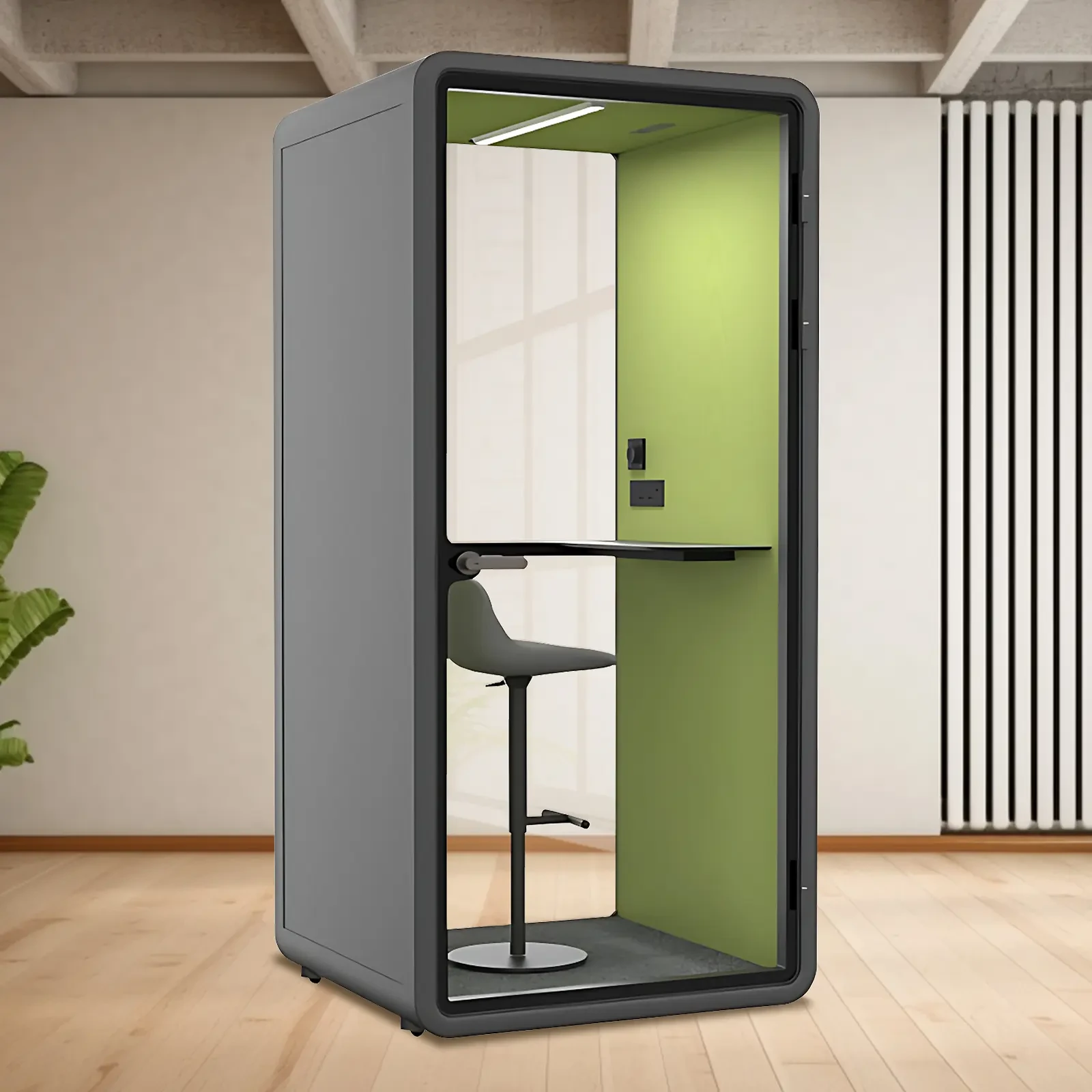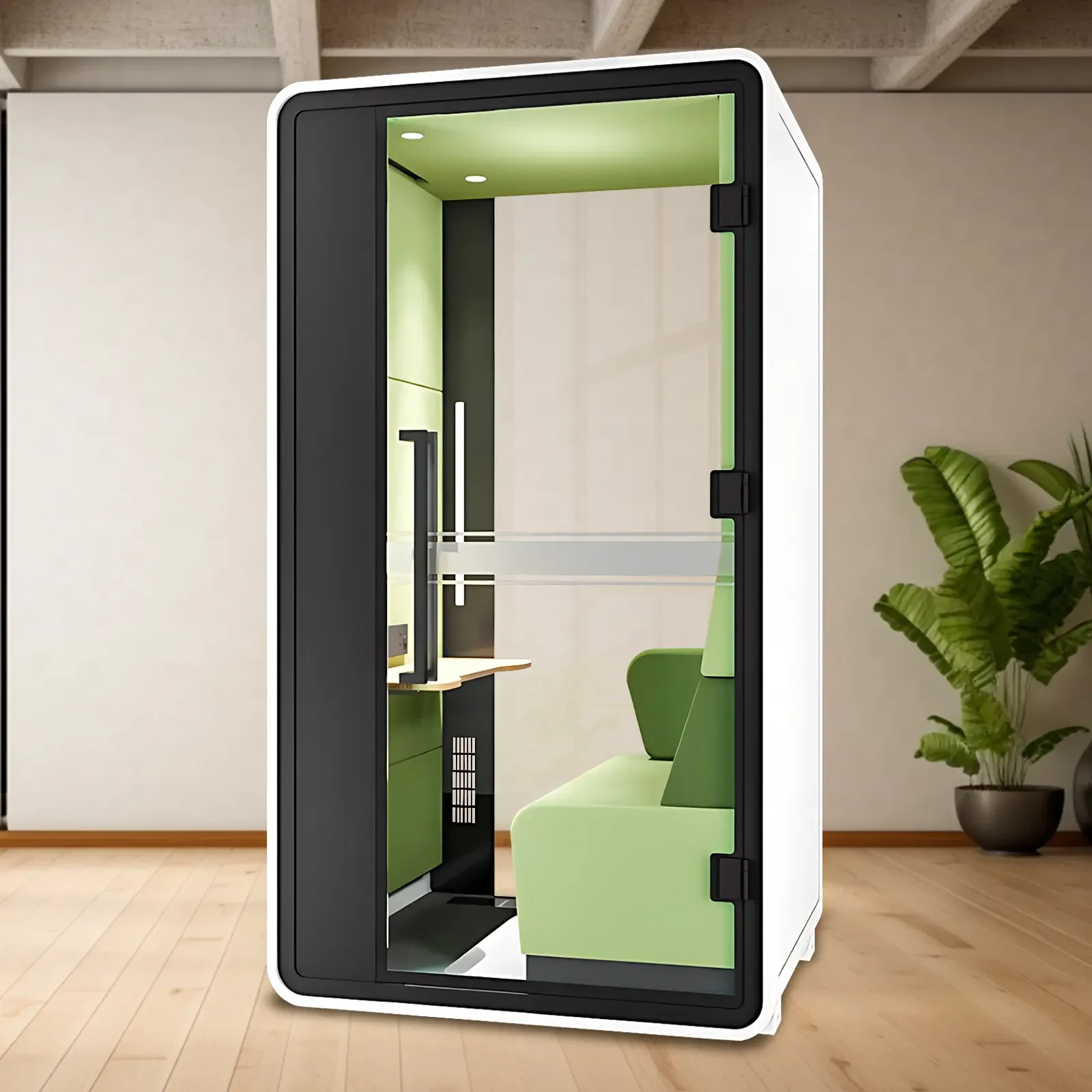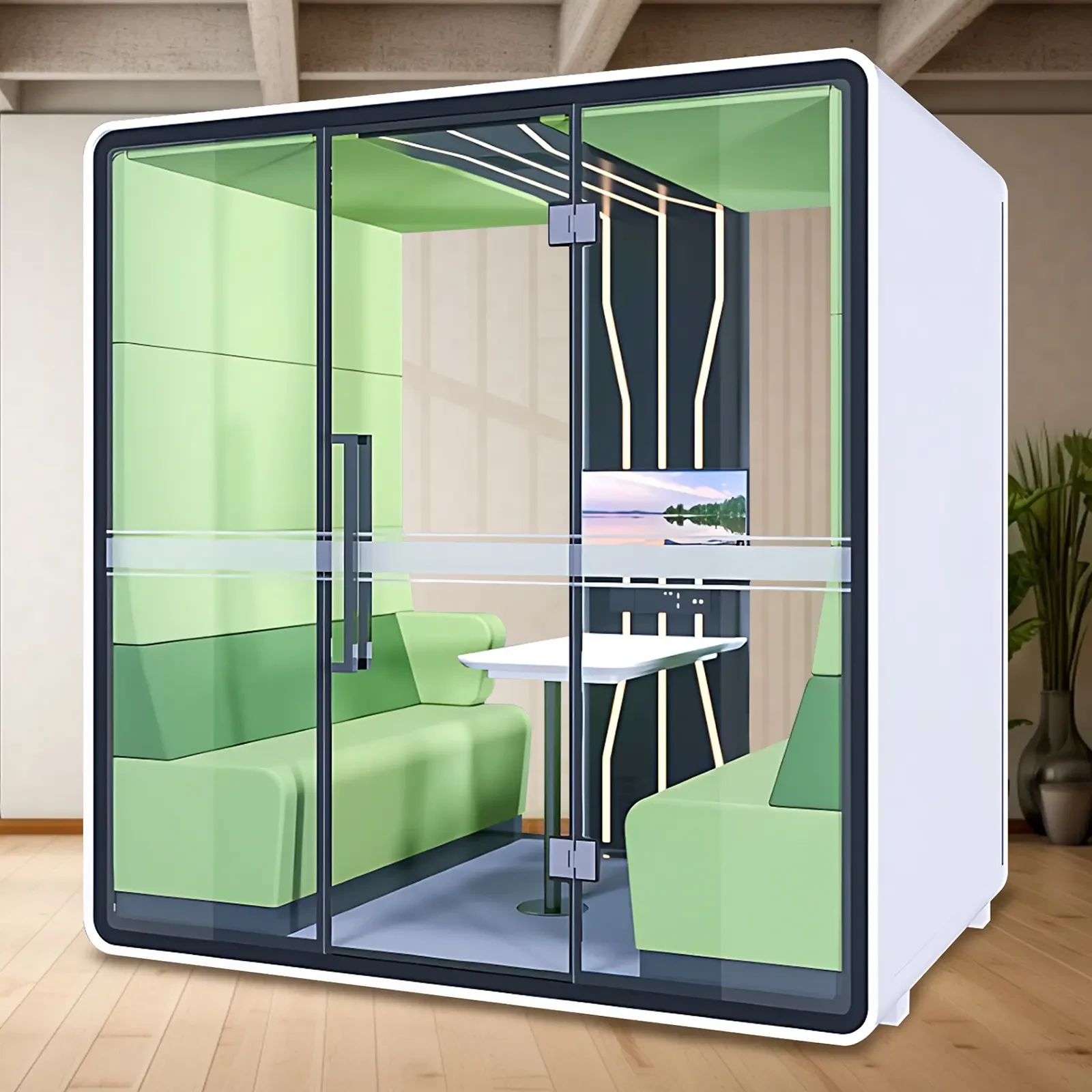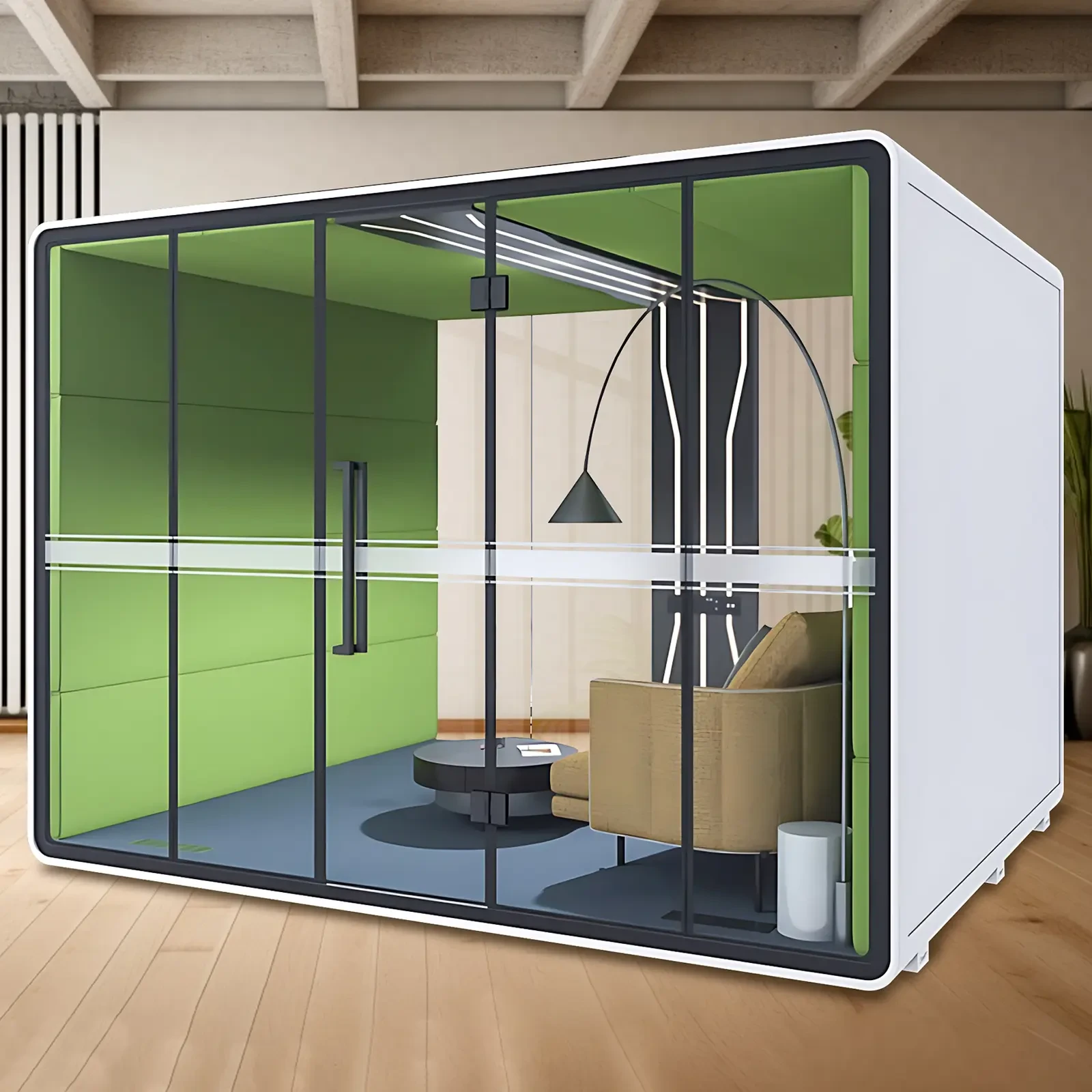Soundproof room, home phone booth, recording studio, piano room, karaoke room, quiet sleeping pod, livestreaming room, removable and detachable
Looking for a private space at home? A soundproof room not only blocks out noise but can also be transformed into a recording studio, karaoke room, sleeping pod, or even a livestreaming room! This article explains the principles of soundproof rooms, key purchasing parameters, and applicable scenarios, and shows you how to achieve your dream of "one room for multiple uses" with a removable, portable soundproof room. From materials to noise reduction levels, installation methods, and price ranges, we'll guide you step-by-step to avoid pitfalls and create your ideal sound sanctuary.✨
What is a soundproof room? Does it really "block out sound"?
Simply put, a soundproof room is an enclosed space designed to block out external noise while preventing internal sound from escaping. 📦 You may have seen them in film and television studios, music producers' rooms, and livestreaming studios—but now, they've entered the average home.🏠
Don't underestimate this "little house." Its core principle is to "block the propagation of sound waves" using multiple physical structures: for example, high-density panels, sealing strips, and sound-absorbing foam create a "soundproof barrier." It's like wearing a pair of super headphones; no matter how noisy it is outside, the inside remains as quiet as ever. 🎧 Scientific tests show that a high-quality soundproof room can achieve a soundproofing rating of 35-50dB (decibels), equivalent to reducing the noise level of a busy city to that of a library. 📚
How to choose a soundproof room? Consider these five key indicators.
Not all "little houses" are soundproof! When choosing a soundproof room, be sure to pay attention to the following five key parameters:
Sound insulation class (STC): The higher the better, and a model with a rating of 35 or higher is recommended. For example, STC40 essentially blocks out human conversation, while STC50 makes even drumming difficult to transmit. 🎶
Material and thickness: The main structure is recommended to use a double-layer steel frame, high-density panels (12mm or larger), and polyester fiber sound-absorbing foam. The heavier the weight, the more stable the sound insulation. Sealing: Doors, window frames, and vents must be fitted with rubber seals; otherwise, "a single leak will ruin the whole project." ⚠️
Removable/Movable: Modern home soundproofing rooms feature a modular design. They can be assembled like building blocks and taken with you when you move, making them flexible and hassle-free. 🧳
Dimensions and Interior Space: Common sizes include 80×80cm (suitable for calls/short messages), 120×120cm (standing up for singing), and 150×150cm (for lying down as a sleeping pod). 🛏️
Tip: If you plan to use this room for recording or live streaming, it's recommended to pair it with a professional microphone and acoustic treatment for maximum performance. 🎤
Six Use Cases for "Sound Freedom" in One Room for One Person
Think soundproofing rooms are only for recording? Wrong! It's the true "all-purpose home cabin" 🚀:
📌 Private Chat Room: No longer worry about your family overhearing you "I'm talking to my boss about resigning..." 📞; perfect for remote work and business negotiations.
📌 Home Karaoke Room: Sing your heart out without disturbing others. Paired with a Bluetooth speaker and a karaoke app, you can have a personal concert anytime 🎤🎵.
📌 Silent Sleep Cabin: A blessing for insomniacs! Close the door, block out the sounds of neighbors renovating or pets, and fall into a deep sleep in seconds 🌙💤.
📌 Recording Studio/Dubbing Room: Want to be a vlogger, voice actor, or podcaster? This is your professional-grade recording space 🎙️.
📌 Live Streaming Room: Worried about noise when broadcasting outdoors? This soundproof room ensures only clear voices and images are captured on camera, dramatically improving the audience experience 🎥.
📌 Psychological Healing Space: People who are sensitive to sound (such as children with autism and those with anxiety) can use this as a "sensory isolation pod" to help them relax. 🧠
Recommended: Which models are worth buying? What's your budget?
Based on user reviews and value, these popular models are worth considering: 👇:
① [Lightweight] Portable Folding Soundproofing Cabin (80×80cm): Suitable for renters/temporary use, priced around ¥1200-2000. Comes with built-in sound-absorbing cotton, assembles in 30 minutes, and compactly stores, perfect for a balcony or bedroom corner. 🏡
② [Advanced] Portable Double-Door Recording Booth (120×120cm): STC ≥40, equipped with a hidden ventilation system and LED light strips, suitable for streamers and musicians. priced around ¥4500-6800, customizable colors and logo stickers are available. 🎨
③[High-End] Fully Automatic Silent Sleeping Chamber (150×150cm): Features integrated air conditioning, an aromatherapy diffuser connection, and a smart dimming system. It can be connected to a mobile app for ambient control, offering an immersive rest experience. Starting at ¥12,000, it's perfect for families seeking a high-quality lifestyle.
💡Tip: If your budget is limited, prioritize products with both sound insulation and sound absorption. Avoid cheap, low-quality options with plastic shells and thin panels, which not only offer poor sound insulation but also easily resonate and produce a buzzing noise.🔊
Conclusion
Soundproof rooms are no longer just for professionals; they're a necessity for a growing number of people seeking "sound freedom" and privacy.🏠 Whether you want to work quietly, sing happily, sleep peacefully, or create a personal livestream, a portable and removable soundproof room can provide you with a truly personal "sound fortress."🛡️
Remember: Good sound insulation ≠ good materials + good craftsmanship + good sealing = a truly silent experience. Choose the right parameters, match your needs, spend money wisely, and enjoy using it🌟.

 USD
USD
 GBP
GBP
 EUR
EUR






